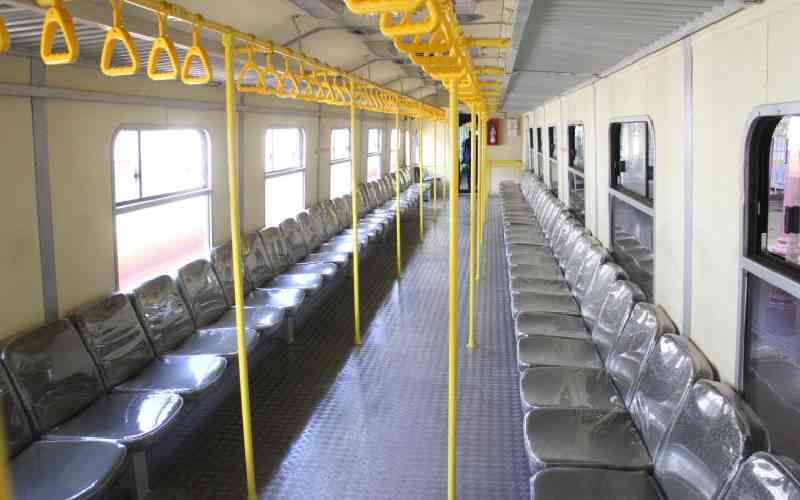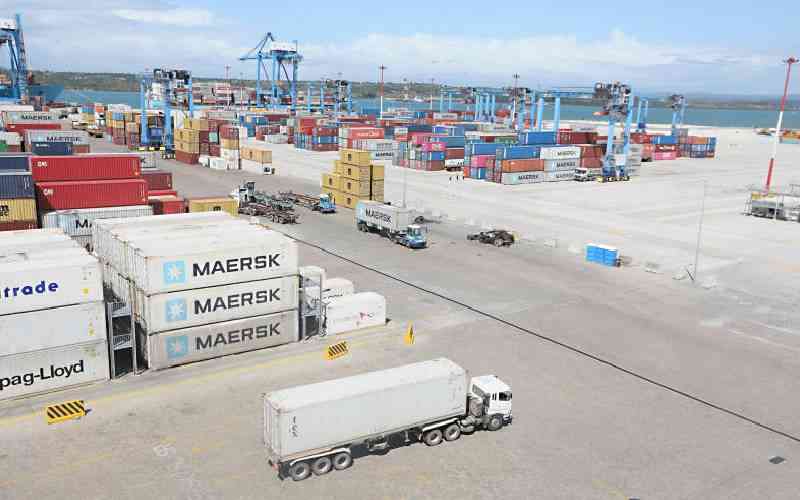By MKALA MWAGHESHA
The stench hits you like a sledgehammer, suffocating. The Mombasa heat does not help matters either. The garbage pile-up on the rear entrance of MacKinnon market, known to many as Marikiti Market, could deceive many on the flourishing businesses to be found inside.
An eye-sore, the wrongly placed dumpsite, which seems to grow by the day, has a tendency to divert one’s attention from the main building that gave rise to the sprawling open-air market that completes the Marikiti area.
Marikiti, a name coined from the word market, is the most visible market in Mombasa County.
History
Located on the busy Digo Road, just before the iconic Barclays Bank roundabout that connects Kenyatta Avenue with Digo Road, the building, from the front view, has retained the same structural look it had since its construction even though it has lost its colour, and original lustre.
Opened in 1914, MacKinnon Market has passed through the test of time. Upon request at the market manager’s office located in the building, any visitor will be shown photographs taken by one Salim M Nasher of how the building looked when it was new.
With its archaic walls and iron-rail windows, the finishing and outside look was done to make it stand out in a location that had Swahili form of finishing in most homes. A mast inside the building has a plaque that traces much of the building materials from Bristol, in the United Kingdom.
According to a trader who has been operating at the market since 1960s, the building and its surroundings was more organised and beautiful than it is currently.
But with the discolouration today due to dust, posters and lack of a facelift and a leaky roof, the building was clearly not constructed with an expanding population in mind as it is smaller compared to many other markets.
Initially, Marikiti was a market for only Europeans and Asians living in the port town. They would throng the it all week to shop for vegetables and spices, the latter a specialty offered in plenty inside, while Africans were expected to get their groceries from Sega market in Majengo, about a kilometre away on Kenyatta Avenue. Interestingly, both markets were supplied with foodstuffs from the famous Kongowea Market.
As the years went by and the country attained full independence, the racial segregation gave way to more open markets. With more people wanting to have a share of a market that had constant clientele, hawkers started encroaching the area around the building.
With parking spaces taken by traders who thought the space was their right, customers with vehicles started finding alternative markets, those with parking spaces and security, a factor Marikiti no longer had.
Before the exodus, traders were specialising in only vegetables and spices. With a change in fortunes, other items like cereals, rice, honey, herbs, palm oil, nuts and plants were incorporated to ensure variety.
Currently, the market is a specialised arena. Most traders who have spent more than ten years inside the imposing building, have become popular, thriving on with references.
Stay informed. Subscribe to our newsletter
From spice masters to oil merchants, the market has nearly everyone under one roof. The area also has the status of a tourist attraction site. Hundreds of tourists visit the Marikiti area on a daily basis with their guides making sure they sample baobab seeds (mabuyu), fruits, spices and other foods on offer. The tourist high season between September and January is revered.
Trade
The open-air market that forms the vicinity of Marikiti is popular for traditional beads, lesos, kiondos, kikois, sandals, beach clothes and swimming costumes at relatively reasonable prices.
The garbage that spills everywhere and makes the historical building seem dirtier than it is, seems here to stay. The council’s trucks cannot access Old Town due to narrow paths. The market area is thus used as a collection centre.
Some brokers who direct customers to stalls also double up as petty thieves and drug peddlers.
The market and Old Town are historical sites. That is why the local authority finds it challenging to demolish or expand the visibly crowded building.
 The Standard Group Plc is a
multi-media organization with investments in media platforms spanning newspaper
print operations, television, radio broadcasting, digital and online services. The
Standard Group is recognized as a leading multi-media house in Kenya with a key
influence in matters of national and international interest.
The Standard Group Plc is a
multi-media organization with investments in media platforms spanning newspaper
print operations, television, radio broadcasting, digital and online services. The
Standard Group is recognized as a leading multi-media house in Kenya with a key
influence in matters of national and international interest.
 The Standard Group Plc is a
multi-media organization with investments in media platforms spanning newspaper
print operations, television, radio broadcasting, digital and online services. The
Standard Group is recognized as a leading multi-media house in Kenya with a key
influence in matters of national and international interest.
The Standard Group Plc is a
multi-media organization with investments in media platforms spanning newspaper
print operations, television, radio broadcasting, digital and online services. The
Standard Group is recognized as a leading multi-media house in Kenya with a key
influence in matters of national and international interest.





